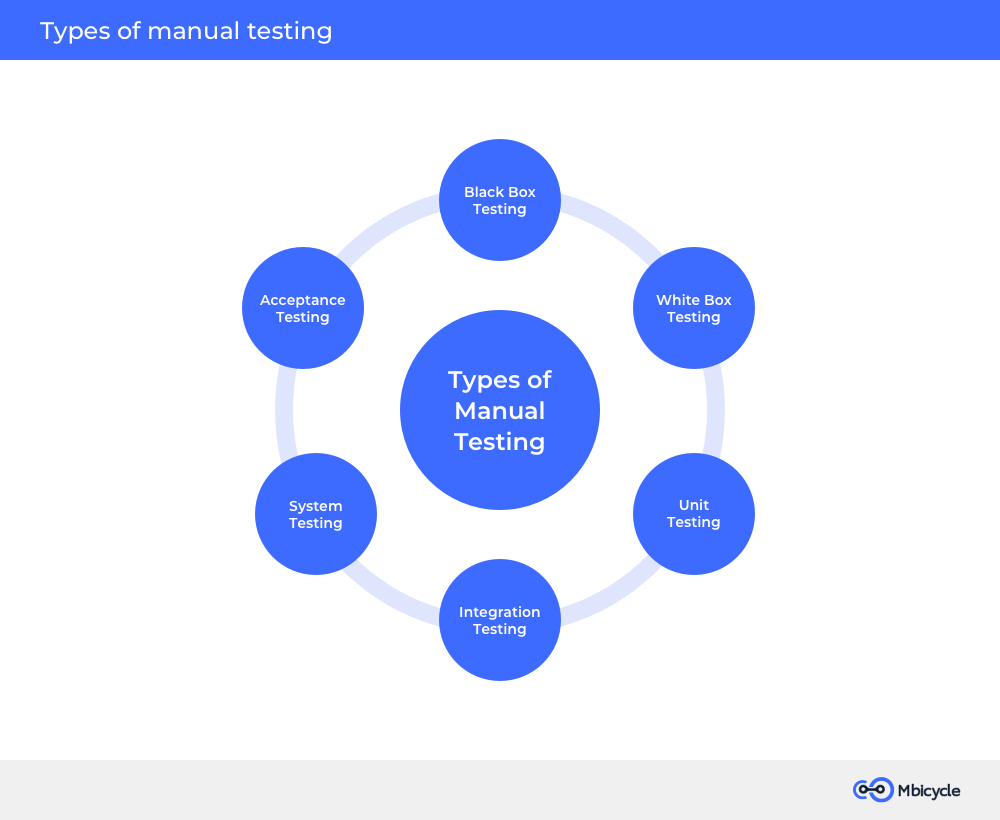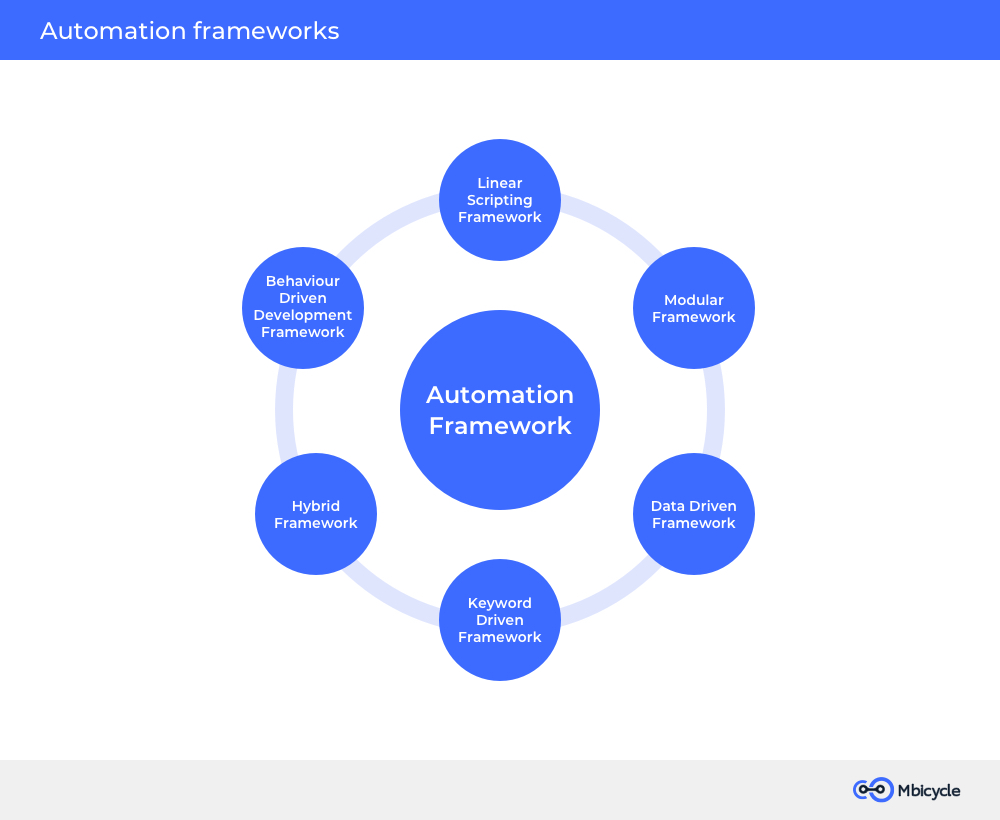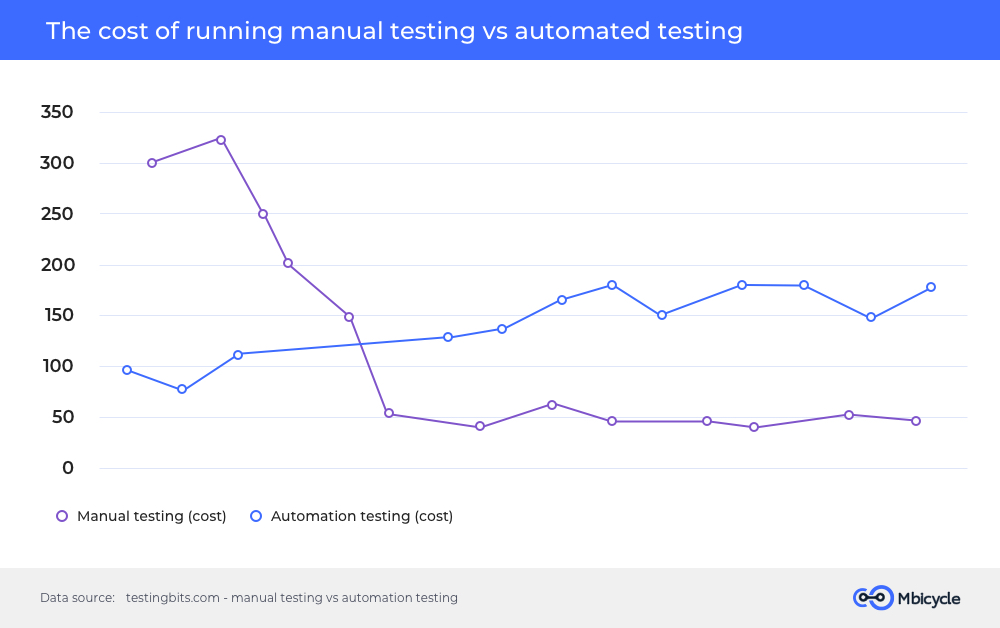Manual vs Automated Testing: An Unbiased Comparison
Manual vs Automated Testing — What's Best for Your Project?
Testing is a vitally important element of the software development lifecycle, as it has many defining benefits for improving the quality of the final product and reducing its total cost of ownership. Applying a proper software testing method can bring additional perks to your project and save resources in the long run.
Software testing includes a large number of categories, such as smoke testing, unit testing, performance testing, regression testing, and system integration testing, among others. Analyzing these testing types, we noticed that some projects require automation, while others show better results with manual testing. As there are a lot of talks about automation in software testing nowadays, different businesses need assistance while choosing the best solution among manual testing, automated testing, or a mix of both approaches.
Considering the importance of software testing, we’ve made an impartial structured guide to manual vs automated testing to help you make the right choice for your specific project.
What Is Manual Testing?
During manual software testing, quality assurance (QA) engineers look for bugs and issues manually by following predefined plans and test cases. The main task of a QA engineer is to simulate users’ behavior and analyze all emerging issues and bottlenecks while interacting with a website or a mobile app. Once testers notice a bug or an issue, they point them out and make reports for the development team. The developers then replicate the same bug or issue and fix them.
There are several types of manual testing:

Here are a few major pros of using manual testing:
- It allows replicating human behavior to notice specific aspects such as broken workflows, low usability, improper fonts, scale, and other UI elements.
- Manual testers are flexible enough to involve creativity during the testing process and check some uncommon issues beyond their test plan.
- Manual testing is cheaper than automated one in the short run.
- QA engineers can start checking new features or design changes as soon as they are developed, without pre-training and scriptwriting needed.
- Manual testing is easier and quicker to launch compared to automated testing.
Together with the advantages listed above, manual testing has the following downsides:
- Several testing types, such as stress and scalability testing, are prone to issues when run manually.
- Involving humans in the manual testing process increases the likelihood of human error, which is a considerable disadvantage of this testing type.
- Repetitive tasks, which are common in regression testing and some other types, are usually time-consuming for QA engineers to do while also being expensive when undertaken on big software projects.

What Is Automated Testing?
Automated testing is based on pre-scripted tests that run automatically and compare outcomes with the expected ones to determine whether an app (or a piece of code) performs well or not. Even though this testing type implies running every testing operation automatically, it still requires involving a QA engineer to create initial testing scripts manually.
For this type of software testing, QA engineers write code or test scripts to automate the entire process using specific tools, such as TestComplete, Selenium, Katalon Studio, QMetry Automation Studio, Appium, etc.
To complete automated tests quickly and cost-efficiently, it’s crucial to choose the most appropriate automation framework for your case, as it helps optimize the entire process, increase test productivity, and reduce costs.
There are several types of automated testing frameworks your QA team can work with:

Let’s take a look at the major benefits of automated testing:
- It allows recording the testing process step by step and reusing the set of scripts further.
- It’s a rapid and accurate testing process accelerating software delivery.
- With automated testing, QA engineers are able to find more bugs and issues compared to manual testing.
- A large variety of tools and frameworks are available for writing multi-purpose testing scripts.
- It increases the testing coverage by including even the smallest units.
Automated testing also has several drawbacks, namely:
- Without human involvement, it’s difficult to get insight into the quality and usability of UI elements like colors, font, sizes, contrast, or button sizes.
- It requires specific tools and frameworks, as well as writing test scripts, which calls for additional resources and thus may bloat your testing budget.
- It requires programming skills and specialized knowledge of the software under test.
- Automation tools are not yet foolproof and have a list of limitations that in the end reduce the automation possibilities.
- Since automation testing runs on predefined scripts, it can check and find only the bugs and issues featured in them.
Manual vs Automated Testing — Key Differences
The first and most obvious difference between manual and automated testing comes from their names. The former testing type is performed by QA engineers manually, while the latter is run automatically following predefined scripts.
There are a few more aspects distinguishing manual testing from automated one. Keep your eye on these while choosing the proper testing type for each software project:
- Reliability
On the one hand, manual testing implies human involvement, which often leaves some room for human error to slip in. This can affect the final product and reduce its quality and reliability. On the other hand, with automated testing in use, you totally avoid such issues. Moreover, the risk of errors during automation won’t increase with more retests conducted. Therefore, automated testing will be more reliable and effective in assuring the quality of your product. - Testing time
Since manual testing is set up and run, well, manually, it does take more time than an automated one. Created once, automated tests can be reused as many times as needed without human engagement, thus saving time and resources. - User experience
Manual testing is a much better way to check the user-friendliness of an app and define all pain points users might face during their interaction with this app. A QA engineer running a usability test works with an application manually and analyzes it as a user would. Automated testing works according to pre-written scenarios and may skip some important elements impacting users’ behavior if those were unobvious during the test design. - Retesting complexity
When testing an app manually and finding a bug or an issue, a QA engineer needs to retest the software and check if the bug comes up again. Moreover, such retests should be performed with all the same settings, including browser version, test length, device type, and other parameters, which require additional effort from a tester. So, in cases when testing should be executed more than twice, automated testing is a better choice, as it can be run as many times as needed keeping the same settings and parameters even without the additional involvement of a QA engineer. - Tools and domain knowledge
Automated testing implies using specific tools and testing environments, writing predefined scripts, and training QA engineers accordingly. That’s why, in order to launch automated testing, a QA team will need additional skills and time for learning, in case they had no previous knowledge of automated testing. From this point of view, manual testing is much easier to master, launch, and maintain.
After discussing the major differences between manual and automated testing, we are going to define cases when it’s more efficient to use manual testing, along with some tips on moving to automated testing if it fits your project better.
When Is Manual Testing More Efficient?
Despite all the benefits of automated software testing, there are still a few cases when manual testing is more efficient, such as:
- Insufficient time and documentation
When your software project lacks documentation and has a rather tight deadline, choosing manual testing can be a better solution, as with an experienced QA engineer on your team you will be able to minimize the preparatory stage and start fixing detected bugs quicker. - Usability testing
Manual testing is much better than automated one in cases when the UX of your future application is crucial, as a QA engineer simulates common user behavior patterns and can intuitively find issues that real users might face. - Random (ad-hoc) testing
This type of testing doesn’t imply specific technical requirements or pre-planning, as tests run with no predefined algorithms. During random testing, QA engineers just take a number of improvised steps and actions, and its efficiency highly depends on the QA engineer’s experience and ingenuity.
With the tools and methods of automated testing becoming more accessible by the day, more and more companies are gradually moving to it. If your company decided to try automated testing too, we have a few tips.
Moving from Manual to Automated Testing
The first thing to consider is the cost of test automation. This parameter will be rather high if you need to run a test only once, but with every next launch, the testing cost will be going down as the scripts are already written and configured.
It’s completely the opposite of manual testing. If you need to run a test once, it requires fewer resources, but with every next launch, the cost of manual testing will increase, because it involves additional scheduling and human input.

With this in mind, you can decide if moving from manual testing to automated one is rational enough for your company or a particular project. If it is, there are a few issues you need to know before the start:
- Complexity
Automated tests are more complex than manual ones and require dedicated tools and frameworks beyond test documentation. - Process automation
Moving to automated testing means automating not just tests but other related tasks as well, such as writing reports, maintaining documentation, upgrading test cases, and others. - Access to the right tools
Switching from manual to automated testing will definitely affect the entire quality assurance team at your company. They would need to reconsider all the testing tools and techniques they use to run tests and submit reports. Choosing the right software testing tools is vitally important, too, as it really helps spot relevant behavior patterns and scenarios. The proper software can also reduce the learning curve for QA engineers and win you a lot of time down the line.
Knowing these issues and solving them timely will help your company move from manual to automated testing easier. If for any reason you aren’t ready to give up the familiar manual testing method, or just don’t have sufficient resources at the moment, you can always get assistance from our team. Following the industry’s best practices, our aoutsourcing software development company is gradually moving from manual to automated testing, as well as efficiently combining both approaches. For example, the Mbicycle’s QA department has already written and successfully set up automated tests for MyTable and Door of Clubs projects, using related and most efficient software tools.
Summary
Automating testing processes all at once is a tough task for most professionals. Moreover, not every software project wins from implementing automation, and there are still a few cases when manual testing proves more efficient.
On the other hand, the reality of providing application support & development services shows that the efficiency of software testing is closely connected with automation. Automating tools and methods are improving every day, becoming more reliable, reducing the time and cost of software development, and keeping up the high standards of final products.
To summarize our article, here’s the comparative table with manual vs automated testing characteristics:
| Criteria | Manual testing | Automated testing |
|---|---|---|
| Reliability | Risk of human error | More reliable as it precisely follows pre-written scripts |
| Cost | Low for one-time tests, high in case of retesting | High for one-time tests but lower with every next test launch |
| Execution time | Takes longer to complete the testing cycle | Swift, can be scheduled |
| Skills | Requires minimal technical skills and is easier to master, launch, and maintain than automated tests | Requires additional learning of specific software and script writing |







